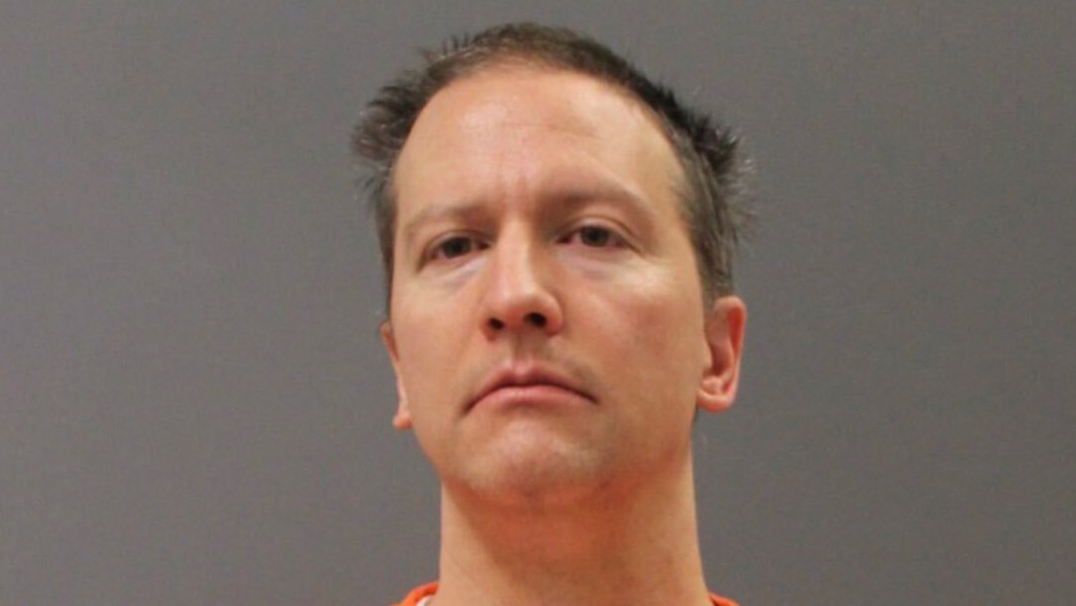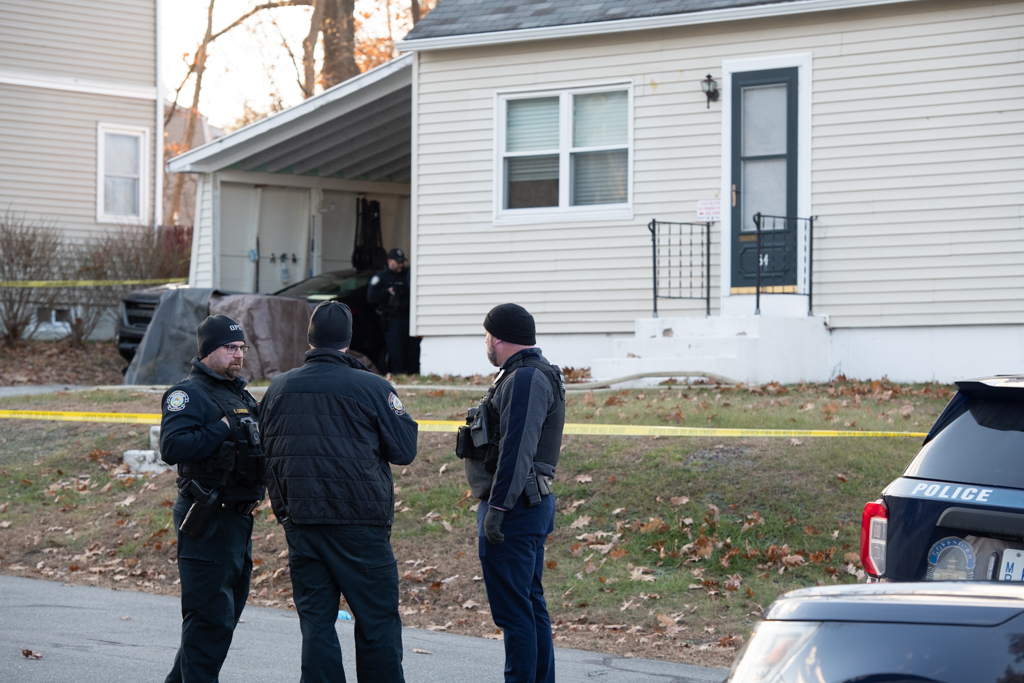When a driver discovered a human skeleton along the side of on Interstate 195 in Fairhaven, Massachusetts, in 1985, investigators got straight to work, trying to piece together clues in an effort to learn who the remains belonged to.
The process was thorough and painstaking, with law enforcement even creating a facial reconstruction out of the skull. But they couldn't learn the victim's identity.
Finally, after nearly four decades, who he is no longer a mystery — the body belonged to Keith Olson, of Cranston, Rhode Island, who went missing in 1981, Bristol County authorities now say.
Get New England news, weather forecasts and entertainment stories to your inbox. Sign up for NECN newsletters.
Key to identifying Olson was cutting-edge, forensic DNA testing, a tool that's helping to find new answers in an array of old cases, including high-profile ones.
"We're going to drive cold cases to extinction," said Michael Vogen of Texas-based Othram, the lab that processed the Olson case. "[We] take really highly degraded, contaminated small amounts of crime scene DNA and figure out who that DNA belongs to."
New answers to old cases
Olson's body is one of two identified so far under a new initiative, announced last April by District Attorney Tom Quinn's, to identify Bristol County's unidentified bodies in unsolved crimes and investigations that span homicides to sexual assaults.
The cases, 12 to start, are being investigated by a cold case unit in Quinn's office.
"The DNA technology advanced significantly since the 80s, 90s, and that’s why you do see around the country these DNA cold case hits ... connecting someone to someone who was murdered," Quinn told NBC10 Boston. "So it's critical."
In Olson's case, Quinn said that one man who was possibly involved, John Broccoli, died in 2019. But there could still be another person who was involved in Olson's killing out there.
Olson was 27 years old when he was last seen. He's believed to have been killed by at least two people.
Investigators now believe that Olson and Broccoli had "friction" over a woman that Broccoli dated before Olson began a relationship with her.
The case revitalized by having an identity to work with, detectives are once again appealing for the public to help identify anyone else who was possibly involved in the killing.
"Identifying the person is what can jumpstart the investigation. If you don’t know who the person is, what is there to investigate?" Quinn said, adding that old-fashioned police work remains the most important part of solving cases. "You still need to interview people, you need people to come forward. The vast majority of cases aren’t going to be solved by getting a DNA hit."
Unleashing the secrets held in DNA
If you've ever wanted to learn more about your health or your ancestors, you may have used a service like 23andMe. It's one of the genetic testing companies that allows you to send your sample off to a lab for analysis.
Othram, the Texas lab focusing on cold cases, says it can get that same quality of DNA analysis from crime scenes -- even from evidence that is "severely degraded and contaminated." The lab tests DNA from both offenders and victims.
"We don't solve the cases, these investigators are solving the cases," Othram Director of Account Management Michael Vogen said. "We're providing information and data sets they may not have had, and then they're using it to do what they do best, which is investigate."
A process called short tandem repeat testing was historically the method for DNA analysis, according to Vogen. The limitation, he explained, is that the process can only match DNA evidence to a close family member's DNA that is on file.
With Othram's process of forensic grade genome sequencing, the number of DNA markers is taken, from a couple dozen to over a million in some cases. That lets the company create a much more robust family tree, giving investigators far more possible connections to work with, Vogen said.
Additionally, people who use consumer DNA testing services can opt to make their genetic information accessible to law enforcement, allowing investigators access to a wide pool DNA profiles to piece together familial connections, and ultimately identify a suspect or victim.
"We can now work from sixth cousin, fourth cousin, fifth cousin," Vogen said. "We don't need too terribly close of a match when we're doing our research to be able to reverse engineer our way into a direct family."
Othram is working with law enforcement agencies all over the country on unsolved cases, with Vogen saying that DNA sequencing is poised to become a more prominent tool in recent cases, too.
"People don't need to wait for cases to go cold anymore," he said. "We're going to drive cold cases to extinction because people won't have the opportunity to commit repeat crime."
Some experts and groups have expressed concern with the speed at which DNA technology has developed. A local branch of the American Civil Liberties Union raised concerns in June over an event at Newton City Hall that would have allowed people to voluntarily submit their DNA samples for entry into a database, to help law enforcement with their investigations. The event was postponed.
"The technology has developed rather quickly," Bunker Hill Community College professor Richard Fox, who leads the college's forensics department, has previously told NBC10 Boston. "It is super powerful, for law enforcement and it is 99.9% accurate, and when I say 99.99, that means the chances of that being another individual are more than the population of the planet."
A 2019 article on Harvard Law School's blog laid out several concerns with the technology as it called for additional consideration of ancillary impacts from the increased use of DNA testing and forensic genealogy. Those concerns include human error, privacy, wrongfully accusing people of crimes and racial disparities.
Mysteries solved in Massachusetts and beyond
There are several cases, unsolved for years in New England, for which DNA testing played a pivotal role in finally getting answers.
Othram was also involved in the Lady of the Dunes case. The victim was identified last year as Ruth Marie Terry.
Terry had been the longest-unidentified homicide victim in Massachusetts; her body was found in Provincetown's Race Point Dunes on 1974. She went unidentified for nearly five decades, until investigative genealogy got involved.
An accused serial rapist, Matthew Nilo, was arrested earlier this year, a decade and a half after his alleged string of sexual assaults in Boston. That arrest came in large part because of advancements in DNA and forensic genetic genealogy. He was living in New Jersey at the time of his arrest; he's pleaded not guilty.
"This really jumps us several generations ahead in terms of what we are able to do with DNA we might recover," Middlesex County District Attorney Marian Ryan has told NBC10 Boston about the technology used in the case.
But she added, "It is not the answer, we are never going to say we have some DNA piece and we are done."
Advances in DNA technology and "old-fashioned police work" led to the identification earlier this year of "Granby Girl," whose body was found in western Massachusetts in 1978, as Patricia Ann Tucker, according to the Hampden District Attorney's Office.
A woman found dead in Bedford, New Hampshire, in 1971, was identified in early 2023 as a 26-year-old Boston University student named Katherine Ann Alston after investigators confirmed a match to a family member in Texas through a consumer genetics kit.
In Quinn's office in Bristol County, Massachusetts, work continues on unsolved cases. Investigators there are also encouraging people who have missing family members to submit DNA samples, with 10 unidentified body cases still under investigation by the cold case union.
"The families should know we’re not going to give up on them," Quinn said. "Some may be more solvable than others, but we’ve put the resources into it, we’ve catalogued the cases and the investigations are ongoing."




